Kalpana Jayaram is an ardent birder who enjoys watching the common birds and their behaviour Read on to find out more about her!
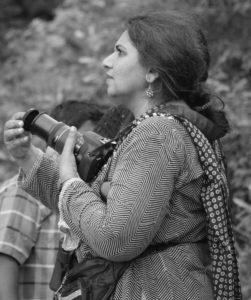
Picture courtesy: Lady Doak College, Madurai
Please tell us a bit about yourself. What do you do and where do you live?
I live in Chennai. I teach Zoology to undergraduates in a well-known womens’ college here.
When and how did you get interested in birding?
I have to thank one of my college teachers, the late Dr. Mrs. Hannah John for getting me interested enough to spend time watching birds. She gave me an assignment that involved correlating habitat with the type of nest constructed by birds. I wrote a report based on my observations on campus and submitted it. Unfortunately, I did not make a copy of this. This was 30 years back. This report would have made a wonderful document on what the campus was like, habitat-wise, during that time (I was a student in the same college where I currently teach).
Earlier too I was fascinated with birds. As a child, I remember fearing for the life of sparrows that tried to make their nests on our ceiling fans at home. I was forever watching out for casualties in horrified fascination as the sparrows seemed to want to come in whenever the fans were on.
I also remember a trip to Keoladeo Ghana National Park, Bharatpur. This was in 1976. I saw so many wetland birds. I did not know their names but they were mesmerising in their sizes, shapes, and the noise they made. There seemed to be thousands of them. The boatman, who took us around, even then, was bemoaning the steady decrease in the number of birds visiting the park. One can imagine the situation now!
Another trip I remember was to Jaisalmer via Pokhran in Rajasthan. This was in 1989. At the implosion site at Pokhran that we visited, someone mentioned that the Great Indian Bustard had been seen recently in the area. After that, throughout that trip I remember desperately looking out for the bird. There was a long hiatus in my interest and then, a trip to Rishikesh a few years back got me back to bird-watching.
Do you have a favourite bird or birds? Why is it/are they your favourite?
My favourite bird keeps changing. Last January it was the Indian Pitta, which was spotted on our college campus. Its colourful garb, shy nature, the fact that it is rarely seen, everything combined, I guess to make it my favourite. Then I became very interested in Black Kites last year as during the months of June and July we spotted, every morning, at least 60 of them, circling at great heights, and moving in a southerly direction between 8 and 9 a.m. Our students spotted 230 of them one morning. Where did these kites come from? Where did they roost? Where were they all before June? A talk by an expert, organised by the Madras Naturalists Society, of which I am a member, partially answered these questions. I am still interested in Black Kites. My “lockdown birding” time is 4.30 pm and the black kites grab my attention each day. There are about 7 of them and they sometimes come down quite close to our terrace. It’s awesome to see them flying so low. Now I am familiar with the habits of the shrieking parakeets, a nesting house crow, the three mynas that move around together, the favoured tree branch of the calling Coppersmith Barbet, the Shikra on the lookout for prey, the pigeons that seem to be courting all the time and a few more birds. All these are now my favourites and I look out for them.
Where do you enjoy birding the most?
Our college campus is a convenient place to watch the common birds and their behaviour. Anything new or different spotted here generates intense excitement and interest. This is also a great place to get the students started on bird-watching. We have spotted over 40 species here. These include flyovers by pelicans, storks, and cormorants. Once we saw a lone White-breasted Waterhen running helter-skelter near one of the hostels. During the Campus Count in 2015, we were lucky to see a Rosy Starlings flyover. We have around 17 bird species that are resident on campus and a few winter migrants that stay on campus including the Indian Paradise Flycatcher (was not seen often last year), Asian Brown Flycatcher, Blyth’s Reed Warbler (not seen last year), the Golden Oriole and the Pitta.
Campus apart, I love watching out for birds on the banks of the Ganges at Rishikesh. The walkway near the river provides a scenic view of the river and the mountains and I can spend hours there just watching the river itself and birds sitting on stones jutting out from the shallows, birds flying over the river and birds on the river bank. It’s a meditative feeling that wells up, focusing on and watching birds. Last year i observed a flock of Garganey here teaching their young ones to feed in the fast-flowing river. It was delightful! Another place I really enjoyed last year was Bhimtal, Uttarakhand. The hillock behind the resort we stayed at had different birds coming in punctually at different times. They were so punctual that by the end of the stay I knew when to watch out for the Whistling Thrush, Orange Minivet, Himalayan Bulbul and the Grey Bushchat. There was a troop of langurs too on the hillside that made the viewing doubly interesting.
Right now, of course, it’s the terrace for me! There is a parakeet that comes in every evening, punctually, sits on the blossoms of the Spathodea tree that stands tall next to the building, picks up a bud, squeezes out water from it to drink, drops the bud and moves on to the next one. It took me a while to understand what it was doing. But now I so look forward to this event.
Do you have a birding partner or a group you enjoy birding with? How is birding alone different from birding with others?
Dr. Vidhya Swaminathan, my colleague, is my most regular birding partner in Chennai. We also join the members of the Shikra Club and other students of our Zoology department during field trips and on campus itself. Recently, during the Pongal Count 2020, Dr. Vidhya and I decided to put up bird lists on eBird from spots outside Chennai, from which no lists had been posted ever. This was based on a grid demarcated by an enterprising eBirder and put up on the Whatsapp group by Dr. P. Jegannathan, coordinator for the Pongal Count. It was an amazing experience, moving in and out of squares in the dynamic grid that we had saved on our cell phones, and that we kept consulting. We put up bird lists from some of these “unbirded” areas.
My husband, Jayaraman, is a patient and supportive “nature walk” companion who lets me be while I go crazy photographing birds and butterflies. I am crazy about butterflies too, so I spend an equal amount of time looking down to spot them. I enjoy bird-watching with others, rather than alone. With more eyes, we have more birds being spotted and discussed. There is more learning. But I do watch out for birds on my own too. I have watched out for them at railway stations, airports, from my kitchen window, terrace, even from the hospital window when I was admitted for surgery. It’s more than just a time-pass! It helps me focus on something worthwhile and I feel good about it.
What is Shikra Club? Do tell us more about it?
The Shikra Club is the initiative of the Zoology Department in our college to get together a bunch of really interested students and give them greater exposure to the fauna in and around Chennai. We do not restrict ourselves to bird-watching, though all the members of the club are eBirders. We photograph all biodiversity -both flora and fauna, that we come across or interests us. We try to identify what we photograph, try to get more information about it, and improve our understanding of the biodiversity around us and its importance. This has been an awesome experience for both students and teachers. The passion and enthusiasm of the youngsters are infectious and the support of colleagues and senior faculty in the college is what encourages us to arrange programs towards nurturing such interest among students. Our department is also privileged to be associated with an expert in natural history, Dr. Ranjith Daniels, who is ever ready to help us out with identifications and answers to curious questions.
Anything on the birding bucket list? (Doesn’t have to be a bird, could be a place, witnessing a phenomenon, etc)
Yes, lots and lots of places that I would love to visit especially for the birds and butterflies and other fauna in those habitats. The North-East, Jammu and Kashmir, Rann of Kutch, Point Calimere, Andaman and Nicobar Islands … my wish-list is loooong! I would love to experience and enjoy seeing all kinds of habitats with their inhabitants.
I am a member of a group called Birding Buddies with extremely inspiring people who take bird education and nature education to children from all backgrounds. Although I am involved in bird education in my college, I would like to extend such educational activities to schools and other colleges.
I am also very interested in classical dance. We have extremely talented young dancers in college and I would love to, through them, capture the flamingo courtship dance on stage in a group production. The nesting behaviour of the crow and the brood parasitic koel would make for a wonderful stage production too. I know this point on my bucket list is not related to birding but there are so many nuances to bird behaviour. If these could be captured in dance …
Has eBird changed how you bird? How?
Earlier I used to just watch birds and maybe jot down something interesting I observed. I was happy to just identify and watch them. Now I can enjoy watching birds and document them too. The eBird app is especially very convenient for this.
eBird has helped me to get my observations more organized and I can review them whenever I want to. For example, the campus counts we carry out in college every year and document on eBird give us a clear picture as to which winter migrants prefer our campus environs and when we can expect them.
My eBird lists also showed me something I found interesting – the Blue Rock Pigeon, the House Crow and the Common Myna figure in lists that I have put up from diverse habitats. It just goes to show how much adaptation these birds are capable of.
Some of my lists are incidental. It may have been some bird behaviour that I just had to record. For example, somewhere on the road between Hubbali and Goa, I was thrilled to see a black-shouldered kite hovering quite low over the grass. It must have spotted its prey and was preparing for the kill. I recorded that at once on eBird. On my trips, I usually carry a small notebook for jotting things down, and then I take my time to enter the list and details on eBird. It’s always a pleasure to revisit experiences through the lists.
The fact that I can also attach pictures and audio (I have yet to post audio) to what I may have seen of birds on a particular day and time secures my documentation all in one place.
I also look up the lists posted from a place I intend to travel to, so I know what to watch out for. The data on eBird lends itself to all kinds of searches. Bird migration routes, graphs, charts, everything is available at the click of a key. The lists provide a ‘ginormous’ database and interested people can make use of this for research on bird movements, breeding, feeding behaviour, conservation, etc. I feel happy that I too am contributing in my own way to this ocean of information. In college, we have been encouraging students to base their projects on the eBird database and one of them recently completed her project on vagrant birds in Tamil Nadu that was based on eBird lists.
Have you set any birding goals for the coming months?
Birding goals would stress me out! I will just watch the birds and watch out for them as and when! That said, a long-wished-for visit to the Nort-east India this summer had been on the cards, but it was not to be. When things become normal and safe again, I hope to, with my birding companions, enjoy the experience of bird-watching on college campus first and then maybe other nearby birding areas. For now, this much is enough!
What is your message for fellow birders?
Birding is not just about looking for and identifying birds and putting up bird lists, it is the experience of seeing the bird as a part of the entire canvas of nature. The trees on which the bird nests and roosts, the water and soil that nourishes those trees, the insects, animals, or fruits that the bird feeds on, the nectar that it sips from flowers, even the bird’s predator, waiting and watching; everything is so beautiful! Let us not mar this canvas in any way.
Header image: Indian Pitta Pitta brachyuraby by Viral Pankaj and Macaulay Library (see checklist)

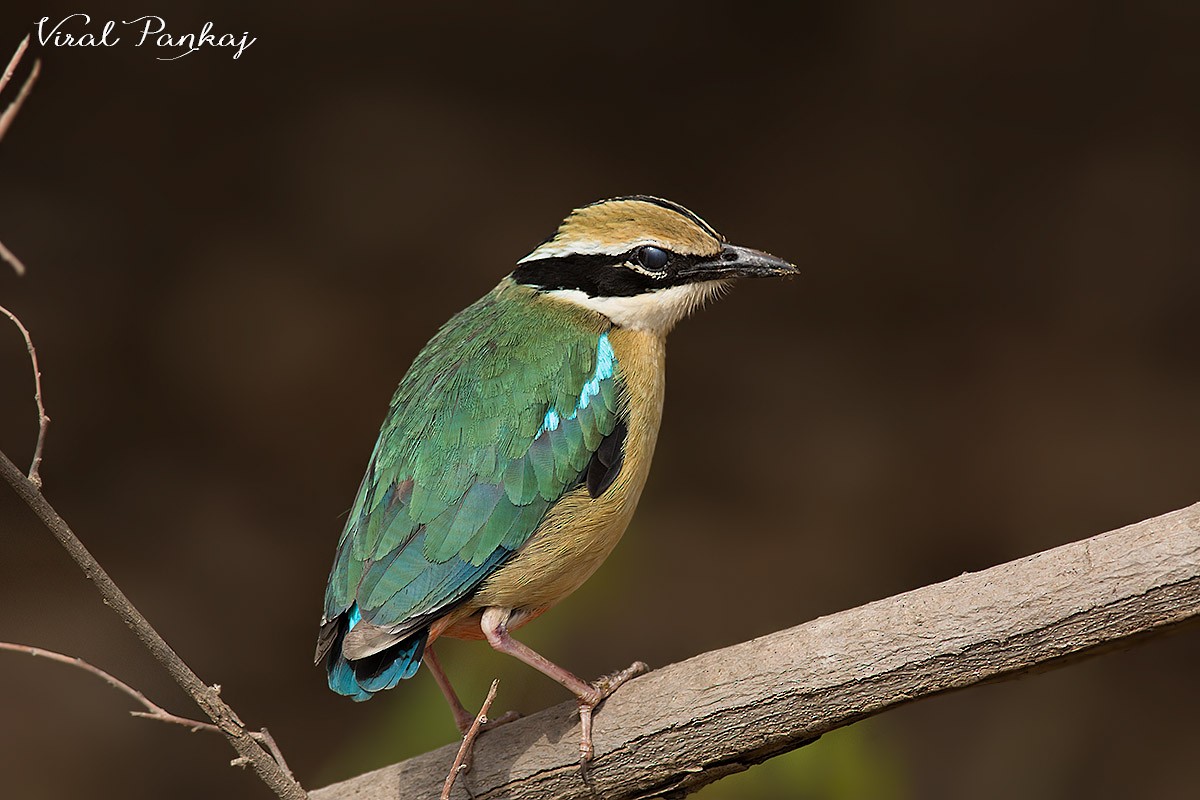
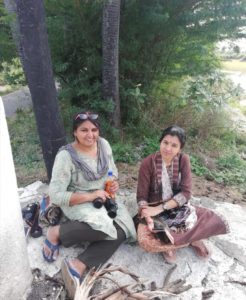
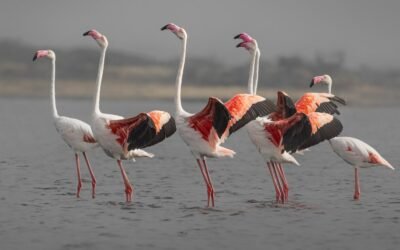
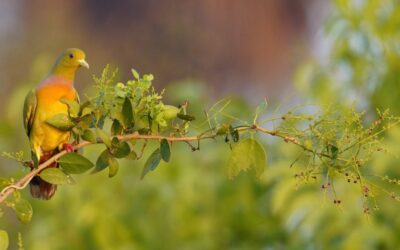
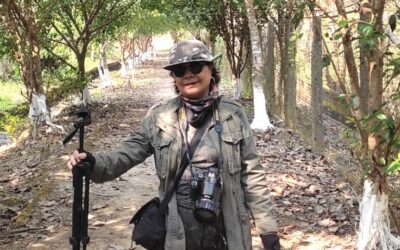
Yes . Birding is an Experience ..through which we observe all things around us. Very Nice article Mam.
Motivating article
This is fabulous write up. Kudos Kalpana.